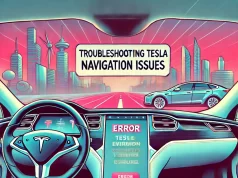One of the common problems that Tesla owners face is the volume control not working properly.
This can be frustrating, especially when you want to listen to music, make a phone call, or hear the navigation instructions.
Fortunately, there are some simple solutions that you can try to fix this problem. In this article, we will explain the possible causes of Tesla volume control not working and how to resolve them.
Why Tesla Volume Control Not Working?
The volume control of your Tesla may not be working due to software bugs, radio glitches, defective speakers, and Bluetooth connection errors.
Software glitches in the audio or infotainment system, radio system malfunctions, and damaged or faulty speakers can all lead to unresponsive or erratic volume control.
Additionally, issues with Bluetooth connections such as weak signals, pairing problems, or compatibility issues can also affect volume control.
How to Fix Tesla Volume Control?
1. Check the Audio Settings
The first thing that you should do is check the audio settings in your Tesla account and on your touchscreen.
Make sure that the volume level is not too low or muted, and that the balance and fade settings are correct. You can also adjust the equalizer settings to improve the sound quality.
2. Check the Fuse
Another possible reason for your volume control not working is a blown fuse.
To check this, locate the fuse box in your car and see if there is a blown fuse for the audio system. If so, replace it with a new one with the same rating.
3. Check the Speakers
If you suspect that one or more of your speakers are defective, you can test them by playing different sounds from different sources and adjusting the balance and fade settings.
If you notice any distortion, crackling, or no sound at all from some speakers, you may need to replace them or have them repaired by a Tesla technician.
4. Update the software
If there is an update available for your Tesla software, you should install it as soon as possible.
This can help fix any bugs or glitches that may be affecting your volume control. You can check for updates by going to Software > Software Update on your touchscreen.
5. Restart Tesla
Sometimes, a simple restart can solve many issues with your Tesla’s audio system.
To restart your Tesla, press and hold both scroll buttons on the steering wheel until the touchscreen turns black and then reboots. This will not affect your settings or data.
6. Reboot the media control unit (MCU)
If restarting your Tesla does not work, you can try rebooting the MCU manually.
To do this, open the glove compartment and disconnect the MCU by pulling on the tab. Wait 30 seconds before reconnecting the MCU and then close the glove compartment. The MCU should now reboot and restore the sound.
7. Check the Bluetooth connection
If you are using a Bluetooth device with your Tesla’s audio system, make sure that it is paired correctly and that it has a strong and stable connection. You can also try disconnecting and reconnecting it or deleting and re-pairing it.
You may also need to update the software of your Bluetooth device or check its compatibility with your Tesla.
Contact Tesla Customer Service
If none of these solutions work for you, you may need to contact Tesla customer service for further assistance.
They will be able to help you troubleshoot the issue and determine if there is a larger problem that needs to be addressed.
You can contact Tesla customer service by phone, email, or chat. You can also visit a Tesla service center or schedule a mobile service appointment.




